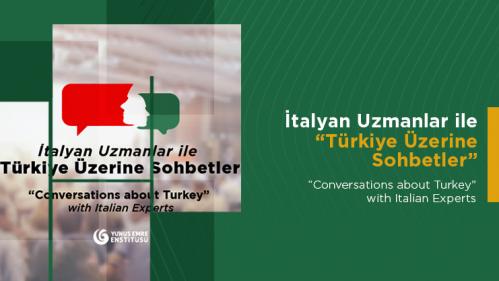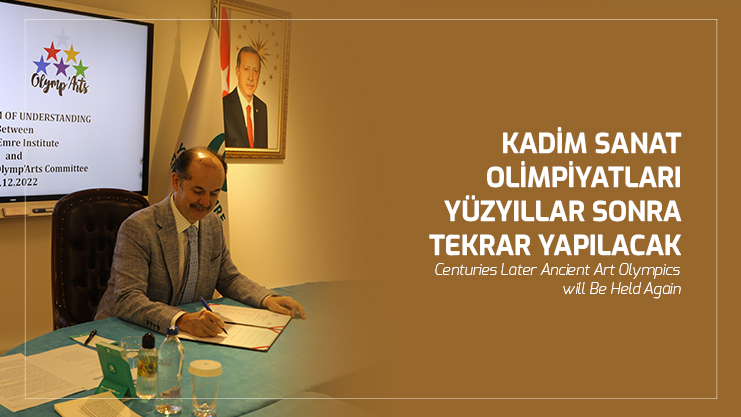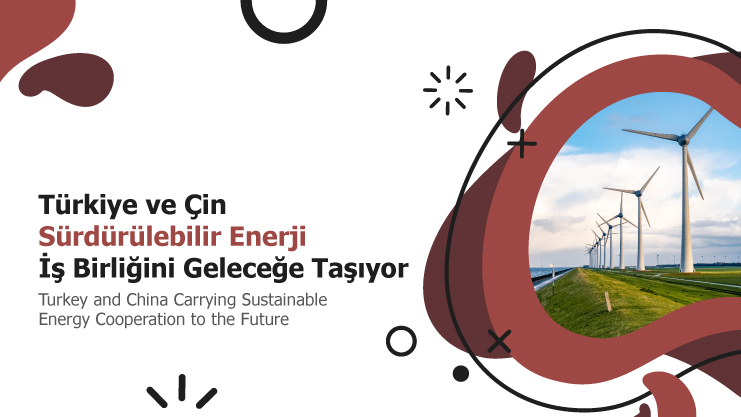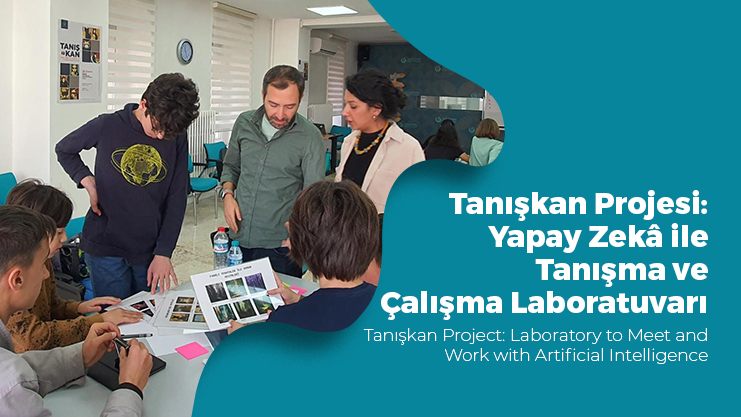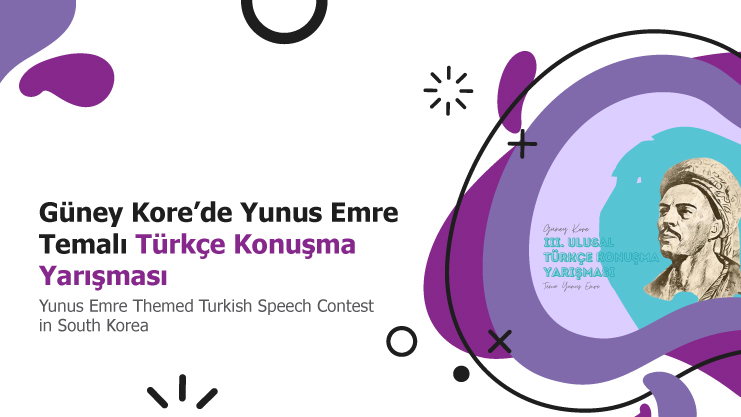Conversations on Turkey with Italian Experts
Yunus Emre Institute in Rome invited experts of different subjects every week within the scope of "Conversations on Turkey" programme series. Turkey and Turkish culture were handled through different perspectives of Italian experts and diplomats at the online programmes organized by Yunus Emre Institute Director in Rome.
FIRST GUEST WAS THE FORMER ITALIAN AMBASSADOR TO TURKEY CARLO MARSILI
The first programme of the Conversations on Turkey series on December 6, 2020 hosted the former Italian Ambassador to Turkey Carlo Marsili.
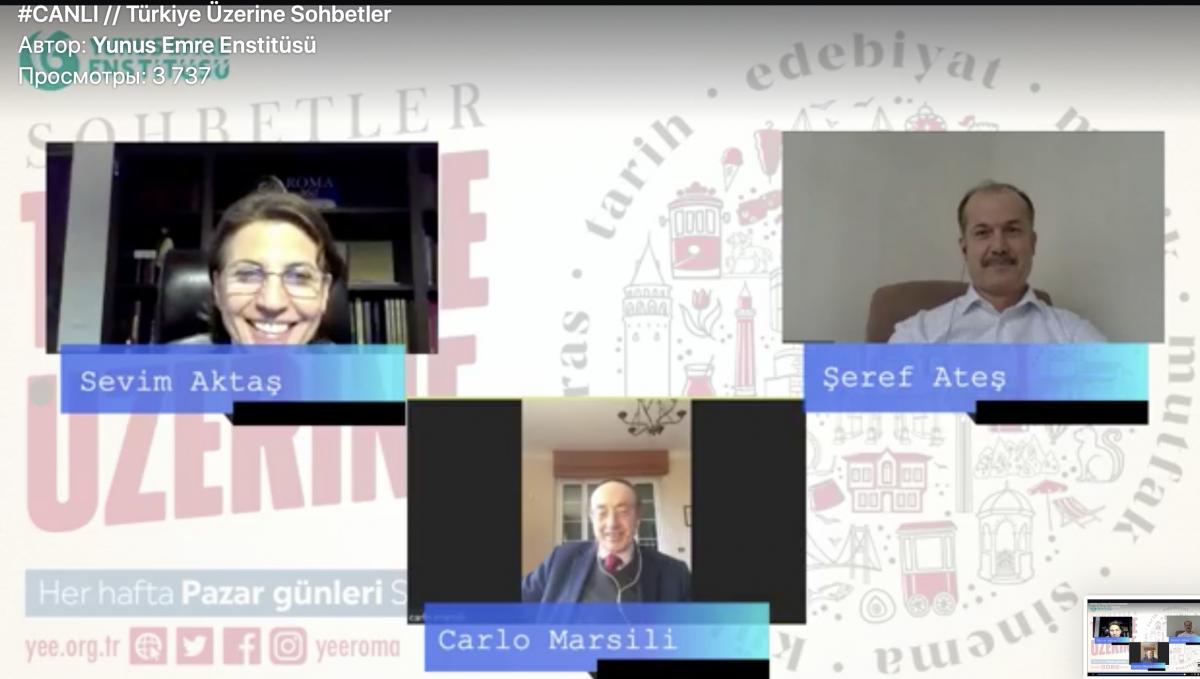
During the programme which was attended by the Institute President Prof. Şeref Ateş, Carlo Marsili, who had been in Turkey for many years and is known as the lifelong Ambassador to Turkey, talked about many different topics and observations on Turkey from social structure of Turkey to international relations, from Turkish diplomacy to Turkey's membership to the European Union. The Institute President Prof. Şeref Ateş emphasized the fact that Turkey and Italy were culturally connected countries and had many things to learn from each other. The programme was streamed live via social media accounts and attracted considerable attention from the viewers.
MARSILI: YUNUS EMRE AND GIORDANO BRUNO ARE REFERENCES FOR HUMAN HISTORY
Ambassador Marsili answered Sevim Aktaş' question "How would you describe Turkey; what do you remember first when thinking about Turkey?" as follows:
"First, I would like to thank Rome Yunus Emre Institute Director Sevim Aktaş. I have been following all the activities of Rome Yunus Emre Institute with great interest. Because the relationship between the two countries is quite interesting and rich, and beyond that, the Institute assumes a very important role and organizes activities regarding the relations between these two countries. Also, with your permission, I would like to thank your Institute President Prof. Şeref Ateş before you. You have mentioned Giordano Bruno during our conversation. It made me happy that you mentioned him. Because Giordano Bruno is a very important personality for us. He is important not only for us but also for the human history, the universal history. It is right of you to make a connection between him and Yunus Emre. I think that these two thinkers constitute an important reference point for the human history and for us.
Marsili emphasized that it was quite important to correctly promote Turkey and continued his words; "Turkey is a great country, a long-established country for Italy. I would like to emphasize this further. When we consider both its geography and strategic position, it stands at a very important point of connection between Europe and Asia, East and West, Eastern Balkans and the Middle East. Of course, this is a very important position. Its geographical position makes Turkey to be at a very crucial place within the Europe's political map.
"TURKEY IS INCLUDED IN EUROPE"
Marsili stated that Turkey was quite important for the Southern European interests in the Mediterranean and explained the geographic and cultural position of Turkey as follows:
As we know it well from Istanbul, Turkey is divided into two lines, just like Europe and Asia. This enables us Turkey to perform fundamental works. This sometimes brings a geographical understanding that Turkey is somehow culturally split into two and Turkey experiences two different cultures, which is a misunderstanding. There seems to be a dilemma whether Turkey will join the EU or not. However, in a broader perspective, Turkey is a country that is completely included in Europe. Because Turkey is an integral part of the European continent along with some parts of Russia. I have also completed a doctoral dissertation. Within the scope of that dissertation, I discussed that we needed to think the region from the Atlantic to the Ural Mountains as Europe. For example, Cyprus is well to the east of Turkey's western borders, but we know that Cyprus is within Europe with its every aspect."
MARSILI: YUNUS EMRE, WHO WAS RAISED IN ANATOLIA, IS A VALUE OF THE ENTIRE HUMANITY
Marsili answered Sevim Aktaş' question, "You have mentioned that Turkey is the geographical bride between the two countries. Do you think that Turkey functions also as a cultural bride between the two countries?" as follows:
"Yes, you need to better emphasize its cultural meaning when compared to the geographical meaning. I would like to say that it serves as a cultural bridge. For example, I would like to remind that Sufism was born in Anatolia. Yunus is a great poet and troubadour of both Anatolia and entire humanity, and as reminded by the President, we will commemorate his 700th death anniversary this year as all the humanity. He was raised in Anatolia."
You can watch the interview of Assoc. Prof. Fabio Grassi by Rome Yunus Emre Institute Director Sevim Aktaş through this link.
ATATÜRK AND THE NEW TURKEY WITH ASSOC. PROF. FABIO L. GRASSI
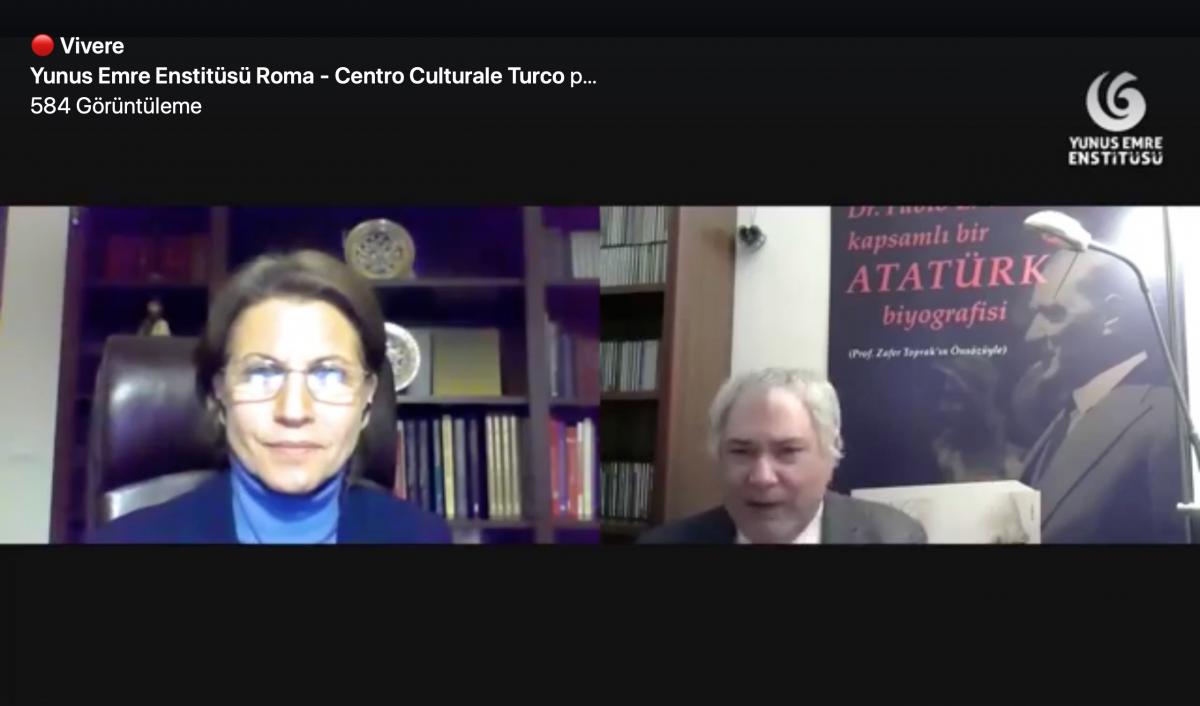
The second guest of the Conversations on Turkey programme was Assoc. Prof. Fabio Grassi from Rome La Sapienza University. Fabio Grassi, who lived in Turkey for many years and is an expert on the Eastern European history, answered the questions of Rome Yunus Emre Institute Director Sevim Aktaş on December 13, 2020.
Assoc. Prof. Grassi, the author of the book on Atatürk which has been published for the first time in Italy, made important statements about Atatürk and the Republic of Turkey during his interview. Historian Grassi talked about many topics from the life of Atatürk to the War of Independence, political aims of the Western governments to the restructuring of Turkey. The interview drew the interest of both the Turkish and Italian audience and was streamed live from the social media accounts.
You can watch the programme with Assoc. Prof. Fabio Grassi through this link.
A VIEW OF THE OTTOMAN EMPIRE WITH PROF. MICHELE BERNARDINI
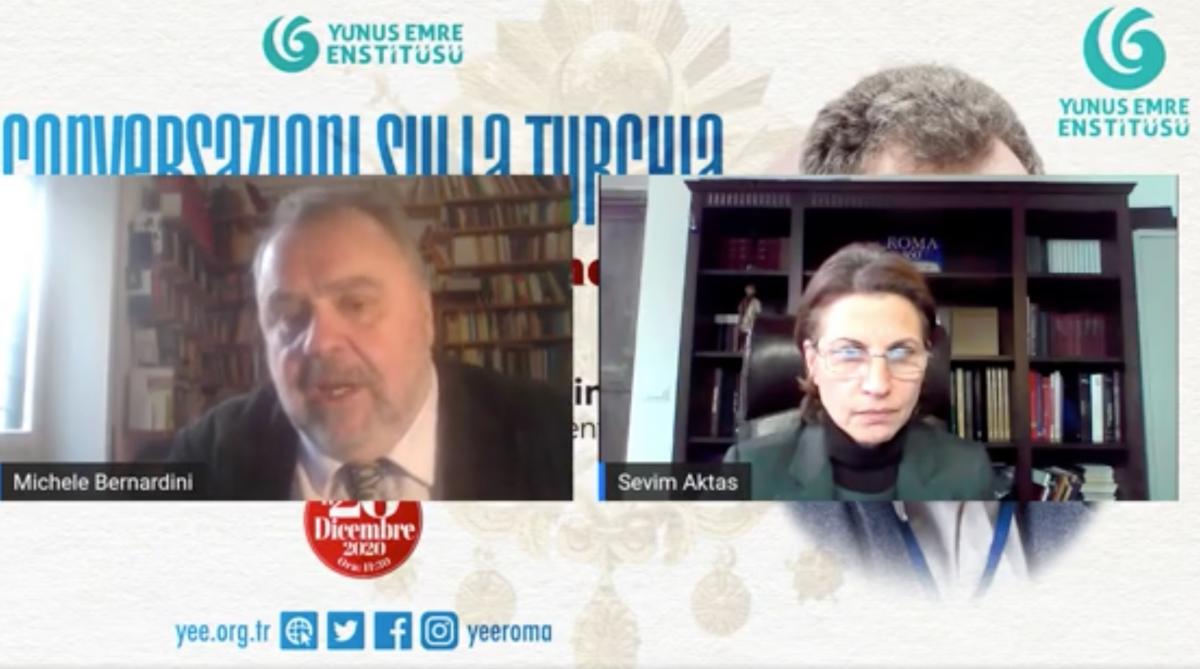 Renowned historian Prof. Michele Bernardini from Naples Oriental University was hosted at the programme organized on December 20, 2020 within the scope of Conversations on Turkey.
Renowned historian Prof. Michele Bernardini from Naples Oriental University was hosted at the programme organized on December 20, 2020 within the scope of Conversations on Turkey.
An expert on Turkey, Iran and Central Asia, Prof. Bernardini provided a general overview of the Ottoman history from the first entry of Turks to Anatolia to the Tanzimat, the final period of the Ottoman Empire, accompanied by the questions of Rome Yunus Emre Institute Director Sevim Aktaş.
The interview composed of many questions and answers regarding topics such as the multicultural and multilingual structure of the Ottoman Empire arouse great deal of interest and curiosity.
You can watch the interview of Prof. Michele Bernardini by Rome Yunus Emre Institute Director Sevim Aktaş through this link.
TURKISH CUISINE FROM THE PERSPECTIVE OF THE ITALIAN CHEF CLAUDIO CHINALI
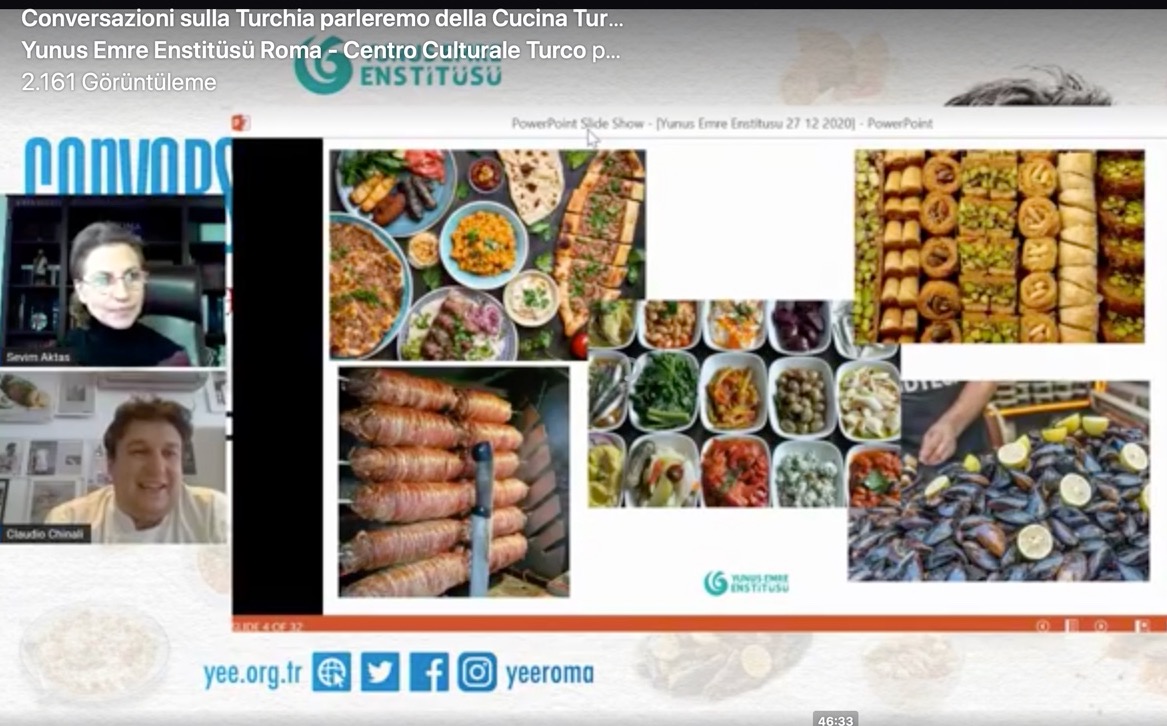
Subject of this week in Conversations on Turkey was the Turkish Cuisine. A colorful conversation about food culture was carried out at the programme on December 27, 2020 with the famous Italian Chef Claudio Chinali. Rome Yunus Emre Institute Director Sevim Aktaş talked about many tastes from the most important foods of the Turkish cuisine to the street food with the guest chef Chinali. At the programme joined by many viewers from both Turkey and Italy, the Italian chef answered questions about the Turkish cuisine such as the most important features of the Turkish cuisine, Turkish table manners, Turkish eating and drinking habits and Turkish pastry. Chef Chinali, who has been living in Turkey for the past 10 years and knows the Turkish cuisine very well, talked about the similarities with the Italian cuisine and gave examples of food that are almost the same.
TURKISH CUISINE IS A TOTAL RAINBOW
Chinali mentioned that he travelled all across Turkey and that Turkish Cuisine has a unique richness with its numerous tastes from many of its regions, primarily from Antep cuisine, and finally answered Sevim Aktaş' question "How would you describe the Turkish cuisine with a single word?" as "Rainbow".
You can watch the programme with the Italian Chef Claudio Chinali through this link.
TURKEY-VENICE RELATIONS WITH GIEMPIERO BELLINGERI
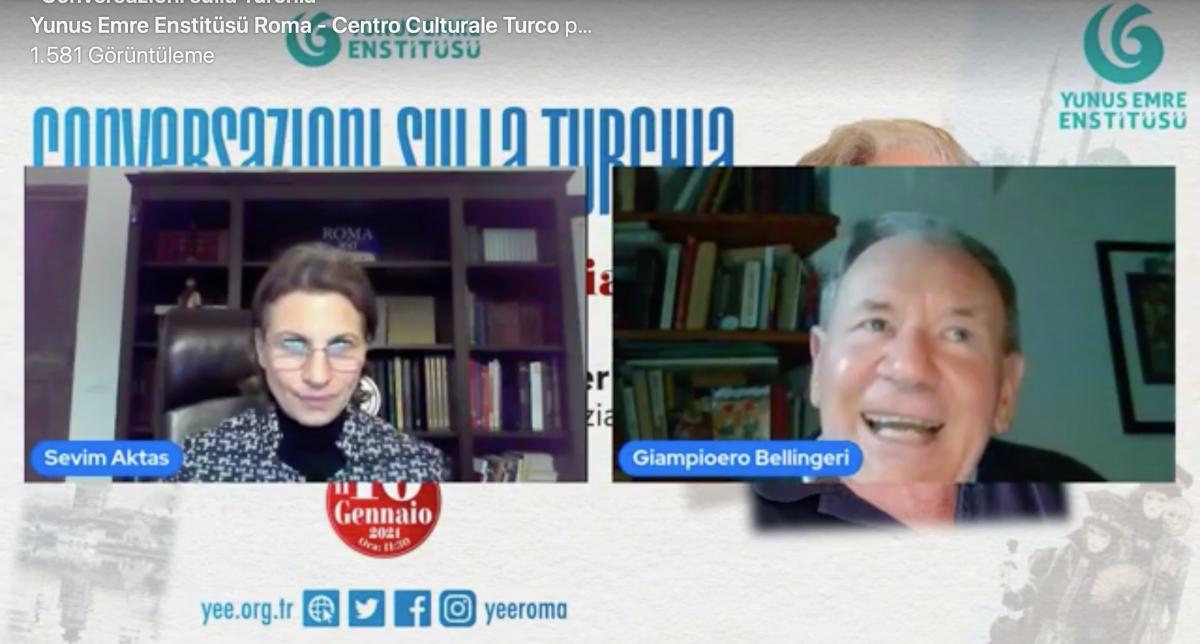 Professor of Turcology Geimpiero Bellingeri from the Venice Ca Foscari University was the guest of the Conversations on Turkey programme on January 10, 2021 Sunday. Turkey-Venice relations were discussed during the programme, and Prof. Bellingeri explained the commercial, diplomatic and cultural relations between the former Republic of Venice and Turkey throughout the history through a broad historical and literary perspective. Rome Yunus Emre Institute Director Sevim Aktaş, who organized the programme, emphasized that the Venice-Turkey relations were the foundations of the modern Italy-Turkey relations and the cultural interaction between the two societies throughout the history had an important contribution to these relations, and asked Prof. Bellingeri many questions about this cultural interaction. The famous turcologist stated that the relations between the two countries, which he explained through some anecdotes and examples, should be considered as cultural heritage that needs to be protected and that there were many issues that need to be researched and discovered in this field.
Professor of Turcology Geimpiero Bellingeri from the Venice Ca Foscari University was the guest of the Conversations on Turkey programme on January 10, 2021 Sunday. Turkey-Venice relations were discussed during the programme, and Prof. Bellingeri explained the commercial, diplomatic and cultural relations between the former Republic of Venice and Turkey throughout the history through a broad historical and literary perspective. Rome Yunus Emre Institute Director Sevim Aktaş, who organized the programme, emphasized that the Venice-Turkey relations were the foundations of the modern Italy-Turkey relations and the cultural interaction between the two societies throughout the history had an important contribution to these relations, and asked Prof. Bellingeri many questions about this cultural interaction. The famous turcologist stated that the relations between the two countries, which he explained through some anecdotes and examples, should be considered as cultural heritage that needs to be protected and that there were many issues that need to be researched and discovered in this field.
You can watch the interview of Prof. Giampiero Bellingeri by Rome Yunus Emre Institute Director Sevim Aktaş through this link.
TURKEY-ITALY RELATIONS THROUGHOUT THE HISTORY WITH ASSOC. PROF. VERA COSTANTINI
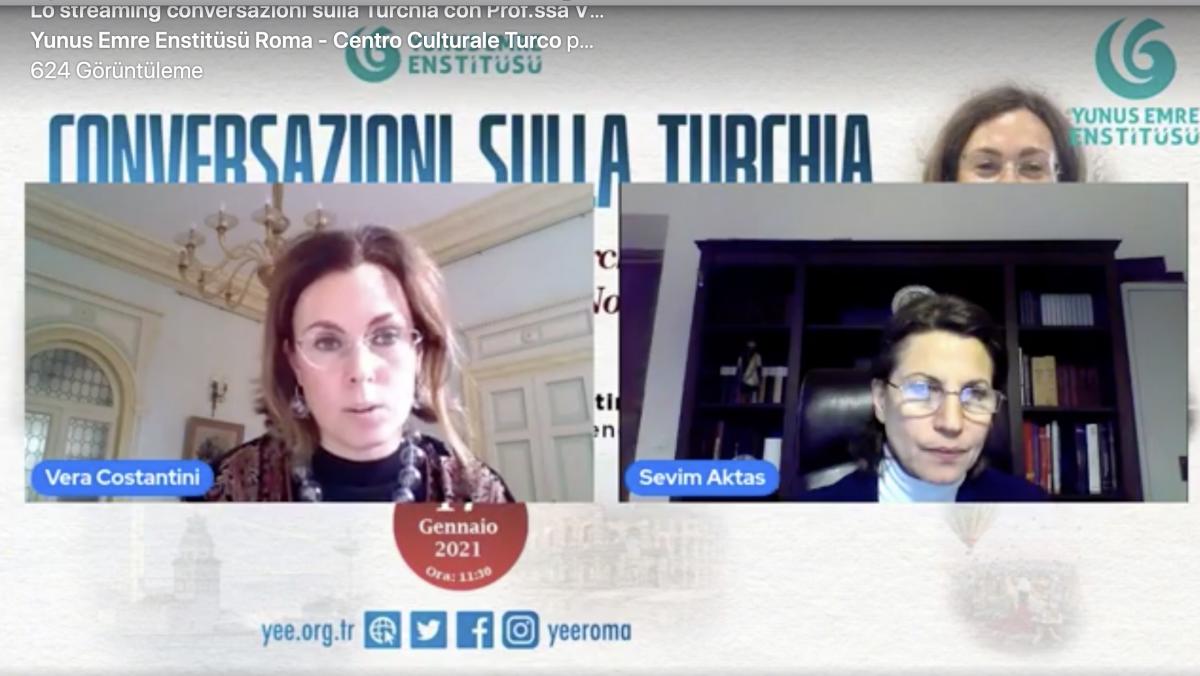
On the episode of Conversations on Turkey programme series dated January 17, 2021, the Turkey-Italy Relations Throughout the History was discussed. Venice Ca Foscari University faculty member Assoc. Prof. Vera Costantini was the guest of the programme.
Dr. Costantini delivers lectures on the Venetian and Ottoman Levant and has a doctoral dissertation where she discusses the administration and political structure of Cyprus through the perspective of Venetian heritage and Ottoman culture.
Dr. Costantini speaks English, French, Ancient and Modern Greek, and Turkish, and works on Ottoman and Ladino languages and paleography.
Assoc. Prof. Costantini answered Sevim Aktaş' question on when the relations between Italy and Turkey started as follows:
"Italy's international acceptance as a country was based on the Ottoman Empire. Because back then Camillio Benso Cavour was the head of House of Savoy and was supported by England. He presented the unification of Italy to the European powers right during the Crimean War. Thus, Kingdom of Sardinia expressed that they would support the Ottomans in this dispute with the Russian Empire. Nevertheless, the Head of House of Savoy would be the protagonist for the next 30 years after the unification of Italy. Therefore, I think that both the inclusion of Italy in this war and the political events after the unification of Italy could be described as a recital of the European powers which have, on the one hand, prevented the expansion of the Russian Empire, and on the other, preserved the borders of the Ottoman Empire. You have rightly mentioned the meeting of peoples. However, when we compare it to the modern Italy and modern Turkey, we see that the first interactions between these two countries were made by some of the ruling class rather than the common folk. Rüstem Bey was present in Turin as the ambassador of the Ottoman Sultan and had personally witnessed the unification of Italy. He had a gained a good place within the elites of Savoy."
Costantini stated that since there were high ranking statesmen of Italian origin within the ranks of the Ottoman Empire, this strengthened the Ottoman-Italian relations.
Dr. Costantini emphasized that after the foundation of the Republic of Turkey, Turkey acquired its civil law from Switzerland and criminal law from Italy and both states were governed by a single-party government for a time and said, "I do not think that it is fit to compare Kemalism with Fascism, and think that this is a grave and unforgivable mistake. Because when we look at the emergence, development and ending of these two phenomena we see that there are serious differences. One such difference is that Mustafa Kemal Atatürk had never defined himself as a dictator and should never be defined as such. Secondly, I would like to emphasize once more that while there were no elections in the Fascist Italy, Turkey had a parliamentary system and held elections.".
Dr. Costantini answered Sevim Aktaş' question of "There have always been very lively and dynamic interactions between the two countries. We can say that the culture was not left behind. Can you list the cultural elements that tie the two countries to each other and are prominent according to you?" as follows:
"I think that these two countries will not be able to overcome the issues in foreign policy unless the relations between Turkey and Italy are emphasized enough. I think that we must put further emphasis on this field and carry out more studies in this field. Because both countries exhibit a very serious commonness in terms of their reciprocal histories, and we also have many common points in terms of our industrial structure and economic structure. Because both countries' economies have structure that depend on small and medium sized enterprises. We have many common interests in terms of security issues in the Mediterranean. I think that we should set aside the misunderstandings, selfishness, personal and national interests in this period we live in and in which the mechanisms of stability change throughout the world, and start to meet on the grounds of democratic principles and modern principles. Because on many instances, the Turkish people have shown how important these principles were for them and how passionately they integrated these into their lives. I wholeheartedly hope for this approach under the umbrella of the European Union.
You can watch the interview of Assoc. Prof. Vera Costantini by Rome Yunus Emre Institute Director Sevim Aktaş through this link.
A CONVERSATION ON TURKISH MUSIC WITH FRANCESCO TAŞKAYALI
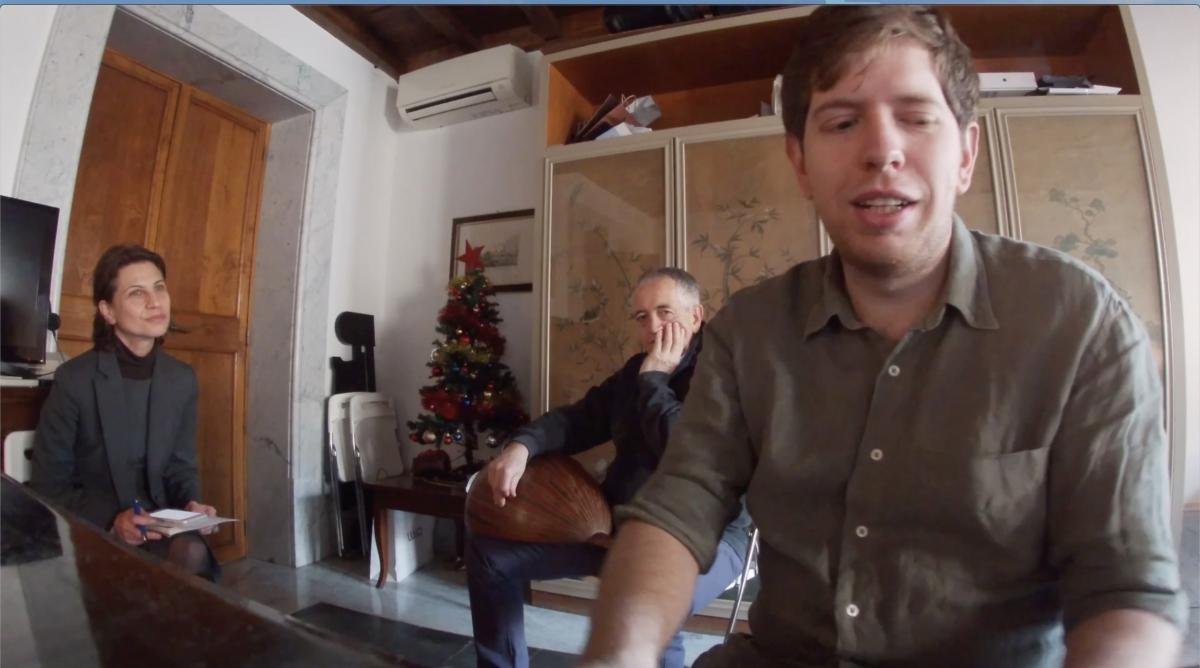
The famous pianist and composer Francesco Taşkayalı participated in the interview held on January 24, 2021 within the scope of the programme. Turkish music was discussed with Taşkayalı. Francesco Taşkayalı performed his oud together with his father Sıdkı Taşkayalı at the programme.
Taşkayalı said, "I am a composer. I was born in Rome. I grew up in Istanbul. As you know, my father is Turkish. Therefore, the Turkish culture was engraved in me and my mind. Many motifs of the Turkish music started to form in my mind before the Turkish and Italian languages. I could say that there was always a melody in my mind. Single rhythms, 7/8 tempo, etc. were always in my mind. You know, normally children watch the TV. There are cartoon jingles in the TV. There are movie soundtracks. Thus, they start to get into contact with music and melodies. At least this is the situation in the Western world. The unchanging music at our house was the works performed by my father. He always played Ottoman music. I have composed many works and also had CDs published. I can say that Istanbul inspired me a great deal."
TÜRKÜS HAVE A SPECIAL PLACE FOR ME
Taşkayalı, who performs his art within the social projects at theaters, jails and hospitals and for the homeless, stated that brining art to the people was fundamental.
Francesco Taşkayalı answered Aktaş' question about which one of the Turkish music genres best represented the Turkish people as follows:
"For me, the answer for this question is Türkü [Turkish Folk Music]. For me, Türkü is a poem that is transformed into a song. This is something that does not exist in the Western world. Türküs refer to quite romantic themes. They refer to life, to love. Türküs never talk about trivial subjects. For me, this genre of music has a philosophical background. I can define it as such. Therefore, if I had to choose one music genre among all others, I would pick türkü."
Sıdkı Taşkayalı stated that the folk music and türküs within the Turkish music had a special place in his heart. Sıdkı Taşkayalı, who also played the baglama, said, "Our Türküs are very important for me; what they represent is very important for me. Türkü represents the feelings of a society. Even though their songwriters and composers are unknown, we still live these türküs that had been written hundreds of years ago. We get excited with these türküs. Wars, life, love and struggles... We can see all of these as if they flash before our eyes thanks to the türküs, just like various episodes of a legend. I think the success of türküs and songwriters of türküs comes from this. The power of the word and music originate from this. This also shows great diversity. It varies from region to region."
When asked about how Western music was performed in Turkey, Francesco Taşkayalı stated that the top ten songs in all countries of the world included either American or English songs. "We must accept this. They managed to export their music with great success. If we talk about the American example, we must also mention an industry of music. We can accept this as a soft power. This is in fact a tool of cultural diffusion. When I was younger, I listened to the same songs in Turkey that I listened to in Italy. In addition, there is the music that we listen in the local language, our own music. There is a great diversity in that. One of the songs that I love and one of the songs that I first remember is Tarkan's.".
Francesco Taşkayalı mentioned that he also liked instrumental music and stated that he liked the songs of Fazıl Say and Say was bringing Turkish culture to the international platform.
EDUCATIONAL AND ACADEMIC WORLD IN TURKEY WITH ASSOC. PROF. VALERIA GIANNOTTA
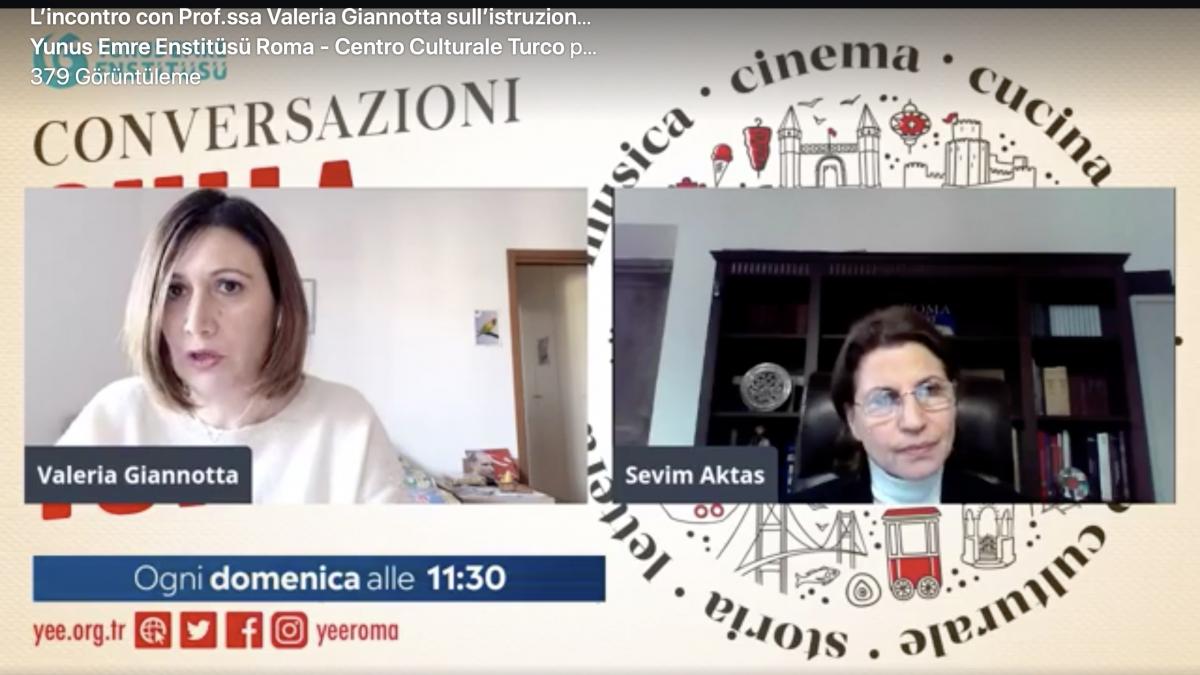 Istanbul Sabahattin Zaim University Political Science and International Relations Department Faculty Member Asst. Prof. Valeria Giannotta was hosted at the Conversations on Turkey programme on January 31, 2021. Giannotta discussed the educational and academic world in Turkey together with Sevim Aktaş. Giannotta talked about her observations throughout the 12 years she lived in Turkey and mentioned that approaches in education were quite different in both Italy and Turkey. She mentioned that the professors positioned themselves further away from the students in Turkey yet there was a friendlier relationship between the students and lecturers where respect was always held high. Asst. Prof. Valeria Giannotta emphasized that she had a sincere and friendly relationship with her colleagues in Turkey. Giannotta mentioned that she received considerable help when she was conducting her research and stated that knowledge exchange in Turkish academia was great.
Istanbul Sabahattin Zaim University Political Science and International Relations Department Faculty Member Asst. Prof. Valeria Giannotta was hosted at the Conversations on Turkey programme on January 31, 2021. Giannotta discussed the educational and academic world in Turkey together with Sevim Aktaş. Giannotta talked about her observations throughout the 12 years she lived in Turkey and mentioned that approaches in education were quite different in both Italy and Turkey. She mentioned that the professors positioned themselves further away from the students in Turkey yet there was a friendlier relationship between the students and lecturers where respect was always held high. Asst. Prof. Valeria Giannotta emphasized that she had a sincere and friendly relationship with her colleagues in Turkey. Giannotta mentioned that she received considerable help when she was conducting her research and stated that knowledge exchange in Turkish academia was great.
You can watch the interview of Asst. Prof. Valeria Giannotta by Rome Yunus Emre Institute Director Sevim Aktaş through this link.
"TURKISH ARTS AND ART IN TURKEY" WITH LUIGI BALLARIN
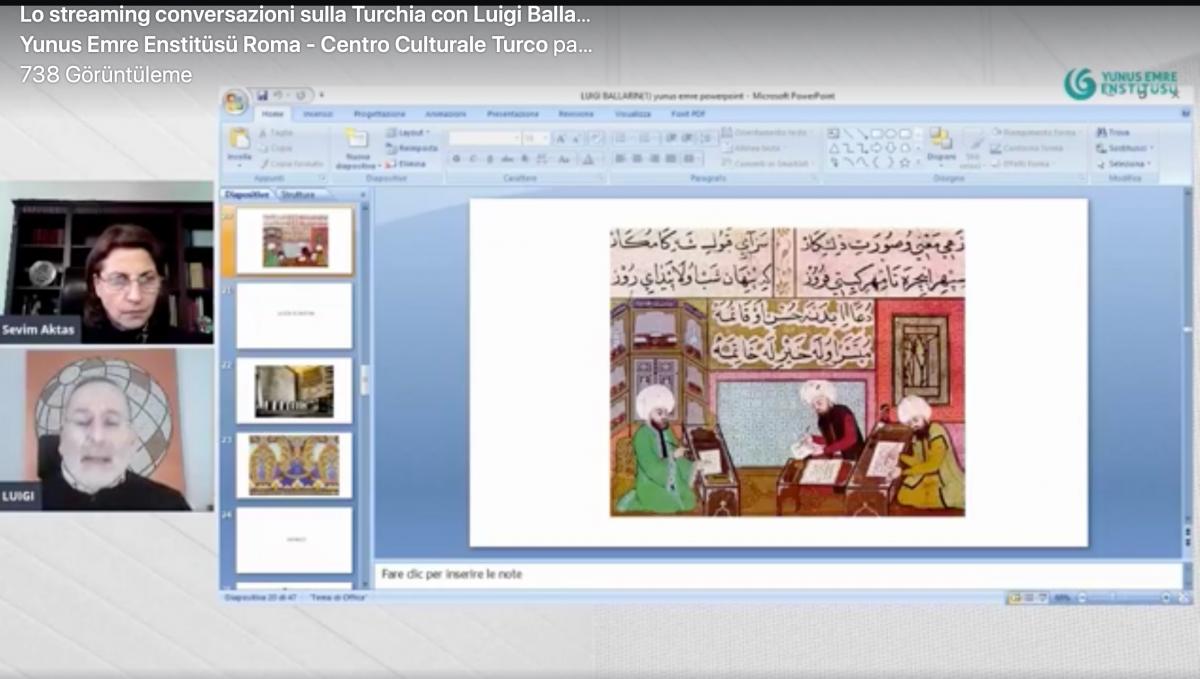
The artist Luigi Ballarin participated in the Conversations on Turkey programme's episode on February 21, 2020. Sevim Aktaş discussed the topic of Turkish Arts and Art in Turkey with Luigi Ballarin.
Luigi Ballarin, who was born in Venice and lives in Istanbul, connected with the Islamic world and the Middle East in 1996 and held his first exhibition in 2000s. After his first exhibition, Ballarin's works were presented in more than 100 personal exhibitions and co-exhibitions. Ballarin, who had a career in the Balkans to the Middle East, from the USA to Asia, uses an abstract artistic language that utilizes the cultural symbols and mysterious characters. Ballarin, who states that the Italian critiques moved well beyond the contemporary Orientalism concept, continues his works to strengthen the ties between the East and the West while sharing his experiences in art and life.
Ballarin answered Sevim Aktaş' question, "We have an artistic heritage that is in general different from the Western art and classical Italian art. What do you think about the traditional Turkish arts in general, and which one do you find yourself close to?" as follows:
"As you have mentioned, we are talking about certain visual arts, and these are the branches of art that concern the lands on which the Republic of Turkey was founded. However, it is not only this, but it also bears the marks of the Hittite, Ancient Greek and Byzantine civilizations that ruled these lands.
Ballarin explained the materials and techniques used in traditional Turkish arts such as marbling, calligraphy, tile, ornamentation in his presentation. Ballarin also mentioned the place of these arts in the Hittite, Byzantine, Ottoman and Seljukid cultures.
Ballarin answered Aktaş' question, "You have been living in Turkey for a long time. Of course, you observe the artistic world in Turkey closely. From your perspective, what are the most prominent elements of the traditional Turkish arts, and do you think that the traditional Turkish arts are still standing and embraced by the Turkish people? If so, what is the elements of such passion?" as follows:
"We can definitely say that calligraphy is at a more prestigious place starting with the Ottoman period. We can say that this art arrived in Anatolia through very important artists Abbasi Yakut Bağdat and Mustasini. We can talk about an art that had its most prestigious period under the rule of Suleiman the Magnificent. Here, we have a serious aesthetic perception based on placing letters and words into each other. We are talking about an art that lived its golden age during the Ottoman period. I would also like to mention carpets. Because carpets were generally used as decorative elements, and of course, these are works of art that embody primarily religious symbols and others, cultural and artistic elements. Carpets are a design element in dwellings, primarily in the tents of the nomadic cultures of Central Asia. Carpets continue to hold importance after these societies transform into sedentary societies in Anatolia.
Let us start with the artistic techniques utilized by these different branches of art. The art of painting is one of the branches of art that has many forms. Many different techniques and materials are used within the art of painting. The art of painting is not only a contemporary art but also a technique that has been alive since the antiquity. Marbling (Ebru) is one such painting technique.".
Ballarin mentioned that the traditional arts of Turkey were quite rich since Turkey, which was home to many different civilizations, inherited the artistic accumulation of many different cultures. Ballarin stated that the heritage of the Hittites, Ottomans, Seljukids, Byzantines and Romans were very important and expressed that the art of calligraphy and miniatures were quite important for his own art. Ballarin stated that he tried to include these more as he also spoke Arabic. Ballarin also mentioned that he included methods of praying and elements of philosophy and belief in his art.
You can watch the interview of the Artist Luigi Ballarin by Rome Yunus Emre Institute Director Sevim Aktaş through this link.
ARSLANTEPE EXCAVATION DIRECTOR PROF. MARCELLA FRANGIPANE: ARSLANTEPE IS A MATTER OF HEART FOR THEM
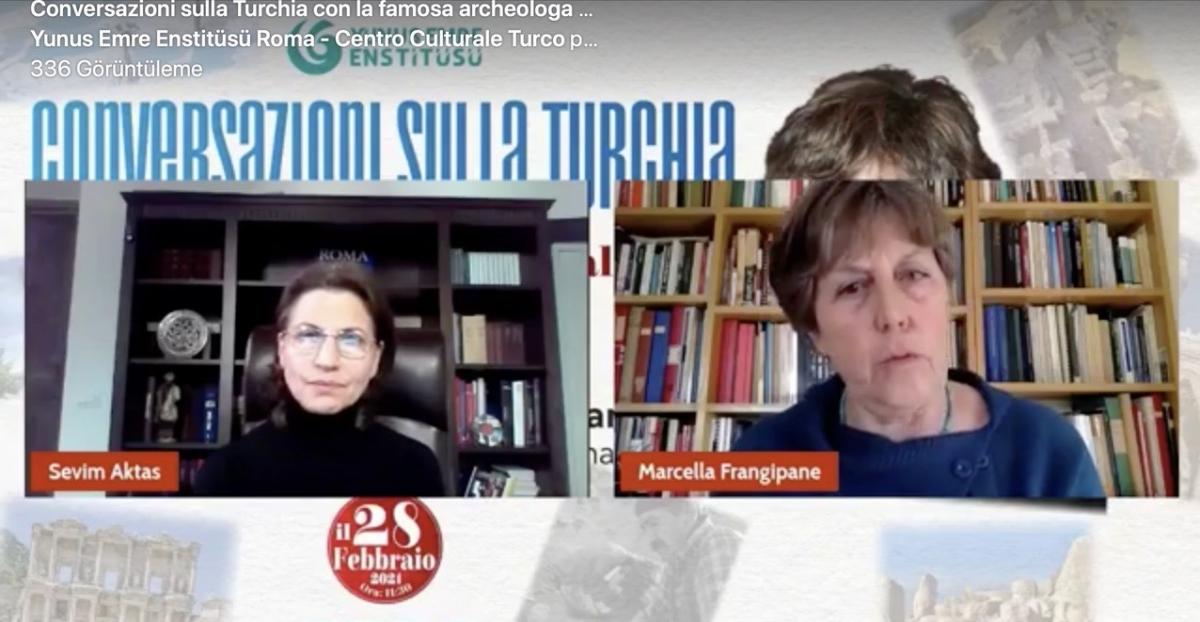
The former Director of Arslantepe Excavations, Rome La Sapienza University Faculty Member Prof. Marcella Frangipane participated in and answered questions at the Conversations on Turkey programme organized by Yunus Emre Institute Rome Cultural Center on February 28, 2021.
Frangipane, who studies the prehistory and protohistory of the Near East and the Middle East, still delivers lectures on undergraduate, master's and doctoral dissertation writing at her university. The world-renowned archaeologist, who worked in Italy, Egypt and Mexico besides Turkey, directed the Arslantepe Excavations for 30 years and is also member of many prestigious scientific institutions, was awarded honors by the President of Italian, and was the editor in chief for the famous archaeological journal of Italy, Origini. Aktaş stated that Frangipane was the heart of the research at Arslantepe.
Prof. Frangipane stated that the argument that Turkey is only a geographical bridge between Europe and Asia would not be sufficient to explain this evaluation that has been accepted by the scientific world and said the following:
"Turkey is also the bridge between different civilizations. It was the home for many different civilizations throughout its long history. I am an expert in antiquity due to my professional formation, and because of that it is of special interest to me. The phenomenon that makes Turkey unique is the process we call the Neolithic Revolution, which starts around 10,000 BC. The reason behind this "revolution" is the fact that a special phenomenon emerged during this period. Humans started to transform from hunter-gatherer societies to sedentary societies in which they produced food. Division of labor starts to emerge during this process. This did not happen overnight but took several thousand years. Turkey is a key point during the Neolithic Period. The Taurus Mountains had become extremely important. Çatalhöyük, Caferhöyük (Konya), Caferhöyük (Malatya; under the Karakaya Dam Lake), Çayönü (Diyarbakır-Ergani) were important settlements. Of course, Göbeklitepe has become prominent in the past few years. There were not only these sites but also others; such as Uşaklıhöyük (Yozgat-Sorgun) in Central Anatolia. These sites enabled us to make a connection with the Near East in the development of Southeastern civilizations. Civilizations developed internally and profoundly in these lands with the development of societies.
Frangipane stated that the public structures in Arslantepe were similar to those of Mesopotamia and this was normal and mentioned that there was a secular system in this settlement. She also stated that the important activities were carried out and the entire life was around the temples during the previous phases, and not only ceremonies and rituals but also activities such as hearings and food distributions were also held around the temples.
Frangipane explained the palace structures that were prominent in Arslantepe and stated that they encountered courtyards, corridors, storage rooms, pitchers, various pottery, and houses of the elite class at the rear of the palace.
Frangipane stated that Arslantepe experienced a great influx of visitors after it was opened for visit, that quite a few number of local tourists visited the site, and that it attracted interest from the other cities of Turkey as well, and said:
"We started our journey with some workers from the region, sometimes their sons and grandsons worked with us. Even though their technical and scientific knowledge were lacking, they understood very well that why this site was important for them. We are not always present there; we only work for two months every year. We have a guard. Finding swords at the site attracted great deal of interest. Sometimes this interest can be bad. Unfortunately, there are illegal excavations everywhere in the world. We did not encounter any illegal excavations at Arslantepe. This shows that the local people have embraced the site. Hire guards as much as you want, ill-intentioned people will find a way to illegally excavate. However, the local people protect this site; they have embraced it. When the guard cannot keep up, if they see a foreign car around, or someone they do not know, they immediately call the authorities. This is their land; they are the real owners. Arslantepe is a matter of heart for them.
Frangipane also answered a question about Göbeklitepe, a site located in Şanlıurfa and the topic of popular history in recent years, and mentioned that Göbeklitepe was a special site with its houses, engraved low pillars, structures and other valuable artifacts but was not a city.
Frangipane answered Sevim Aktaş' question on the most valuable element of the Turkish culture within the archaeological heritage as follows:
"Countless civilizations have passed through Turkey, and they have always left deep marks on the lands they ruled. Most of them were sustained and transferred thanks to history and archaeology. One such element that we must protect is the usage of mudbricks. I not only find it aesthetically pleasing, but it is also practical, practical and provides thermal insulation. Upon my special request, we have built our excavation house from mudbricks, which is an extraordinary material which keeps the house cold in summer and hot in winter. Of course, it is hard to maintain since it is formed of mud that can easily be damaged, and it requires constant renovation and careful maintenance. It is a tradition that can be observed in many parts of Turkey. I have seen hearths and different installations in mudbrick structures. It is important to protect and remember this architectural value."
You can watch the interview of the Professor Marcella Frangipane by Rome Yunus Emre Institute Director Sevim Aktaş through this link.

